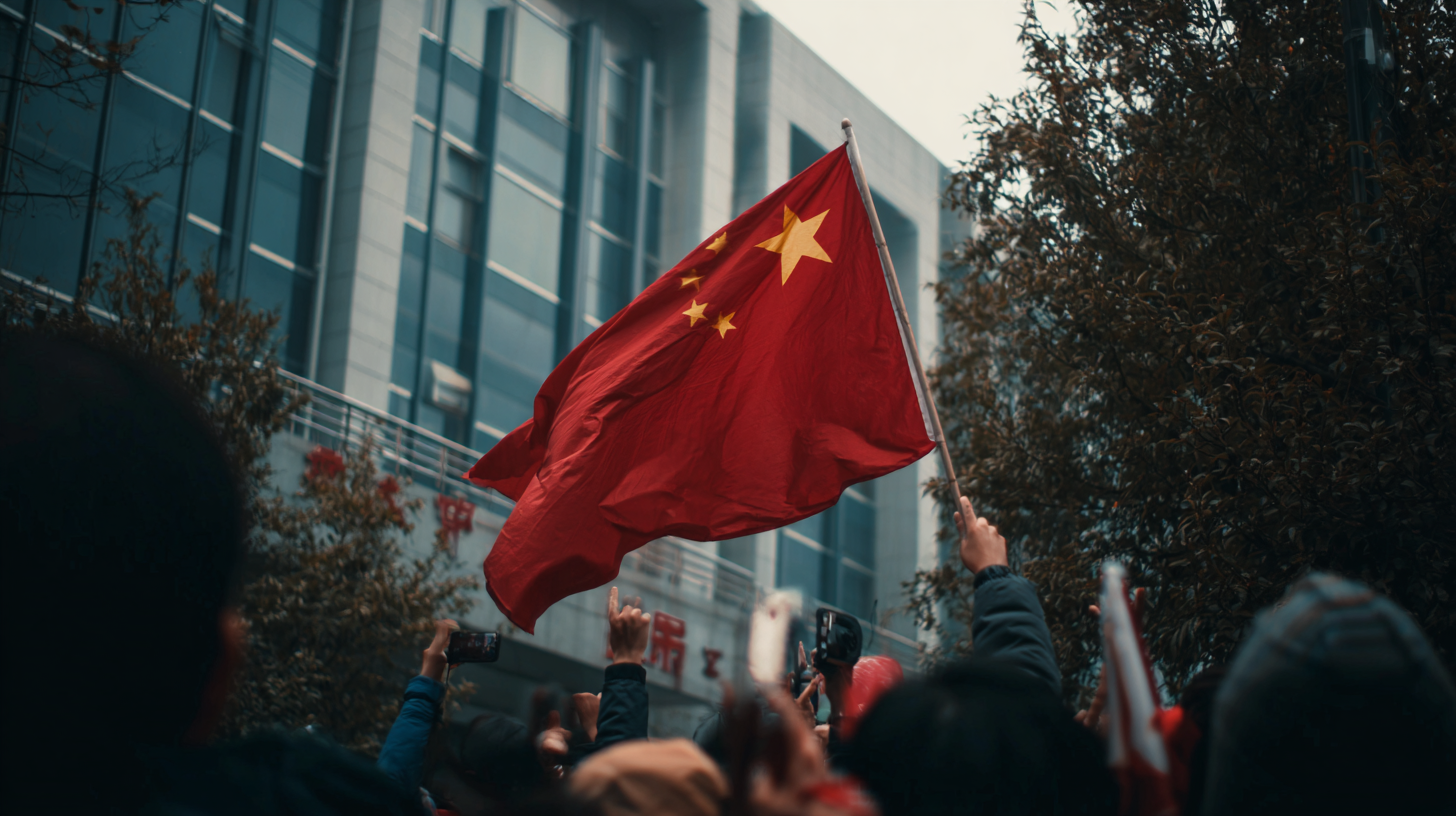China's Innovation Delivers Premium Office Flag Stands to the World
In recent years, China's commitment to innovation has positioned it as a leader in the production of premium office flag stands, catering to a growing global demand. According to a report by Grand View Research, the global flag and banner market is projected to reach $9.8 billion by 2025, with a significant portion attributed to office settings where flag stands enhance branding and professionalism. As more businesses recognize the importance of creating a distinguished workplace atmosphere, the industry standard for office flag stands has evolved, emphasizing not only aesthetics but also durability and functionality. The integration of advanced materials and sustainable practices in the manufacturing process reflects a broader trend towards environmental responsibility, underscoring that China's innovation is not just about quantity but also about quality and sustainability in the office supply sector.

The Rise of Premium Office Flag Stands: A Global Perspective
The rise of premium office flag stands has marked a significant trend in global corporate culture, reflecting a shift towards personalized branding and enhanced workplace aesthetics. Recent industry reports indicate that the market for premium office accessories, including flag stands, is poised to grow at a compound annual growth rate (CAGR) of 8.6% through 2028. This growth is fueled by the increasing importance of brand identity and the desire for visually appealing workspaces. As businesses strive to create a more engaging atmosphere, the demand for high-quality, customized office flag stands that convey corporate values and goals has become more pronounced.
**Tip:** When selecting premium office flag stands, consider the material and design that best represent your brand. High-quality materials such as aluminum and wood not only enhance durability but also add a touch of elegance to your office space.
Additionally, global procurement strategies have evolved, leading to a surge in demand for products sourced from innovative manufacturers, particularly in China. With advancements in production technology and design, Chinese companies are delivering superior flag stands that meet international standards. A recent study showed that over 65% of businesses now prioritize sustainability in their purchases, highlighting the importance of eco-friendly materials in flag stand production.
**Tip:** Opt for flag stands that utilize sustainable materials, reinforcing your company’s commitment to environmental responsibility while also appealing to eco-conscious consumers.
Global Demand for Premium Office Flag Stands by Region (2022)
Innovative Manufacturing Techniques from China's Leading Factories
China has emerged as a global leader in innovative manufacturing techniques, particularly in the production of premium office flag stands.
According to a report by Deloitte, the manufacturing sector in China is expected to grow at a CAGR of 7.4% from 2020 to 2025, driven by advancements in automation and precision engineering. This growth is reflected in the quality and functionality of office equipment such as flag stands, which are designed to meet diverse needs in corporate environments.
Leading factories in China are investing heavily in smart manufacturing technologies. For instance, the adoption of Industry 4.0 methodologies, including IoT and AI, has resulted in a 30% increase in production efficiency. These innovations not only enhance the durability and aesthetic appeal of office flag stands but also allow for customized solutions tailored to the specific demands of customers worldwide. A report by McKinsey highlights that companies implementing advanced manufacturing techniques can reduce lead times by up to 50%, effectively positioning Chinese manufacturers at the forefront of the global market for office essentials.
Building Trust: Quality Assurance in China's Flag Stand Production
China's reputation for producing high-quality goods has significantly enhanced its standing in global markets, particularly evident in the manufacturing of premium office flag stands. These products not only symbolize the commitment to quality but also reflect a growing emphasis on innovation within the country's manufacturing sector. While challenges in the supply chain, such as withheld goods, surprise fees, and late deliveries, may surface, China's robust quality assurance protocols are designed to mitigate such risks, ensuring that each flag stand meets international standards before reaching customers worldwide.

The landscape of supply chain management in China is evolving as local manufacturers increasingly adopt advanced technologies and streamlined processes. As Chinese companies navigate the complexities of production and distribution, their focus on meticulous quality checks plays a critical role in building trust with global partners. In a world where reliability is paramount, China's ability to deliver high-quality flag stands amidst potential supply chain challenges positions its manufacturers as leaders in innovation and quality assurance. This synthesis of quality and ingenuity not only enhances the reputation of China as a supplier but also establishes a benchmark for excellence in the industry.
Sustainable Materials and Their Role in Office Accessories
As companies increasingly prioritize sustainability, the demand for eco-friendly office accessories is on the rise. The global office furniture market, valued at $64.1 billion in 2022, is projected to reach $85.5 billion by 2030, showcasing a compound annual growth rate (CAGR) of 3.8% from 2024 to 2030. This growth is closely tied to the shift toward remote work and urbanization, reinforcing the need for effective workspace solutions that do not compromise on environmental responsibility.
In this context, premium office flag stands made from sustainable materials emerge as both a stylish and responsible choice for modern workspaces. As consumers become more eco-conscious, the incorporation of sustainable materials into office accessories helps organizations communicate their commitment to environmental stewardship. The projected growth of the home office furniture market, expected to soar to $15.5 billion by 2024, further emphasizes the significance of sustainability in office design. With a CAGR of 4.4% anticipated from 2025 to 2034, innovative products that utilize environmentally friendly materials are positioned to lead this expanding market.
China's Innovation Delivers Premium Office Flag Stands to the World - Sustainable Materials and Their Role in Office Accessories
| Material Type | Sustainability Rating | Durability (Years) | Recyclability | Market Demand (Units/year) |
|---|---|---|---|---|
| Bamboo | High | 10 | Yes | 50000 |
| Recycled Plastic | Moderate | 5 | Yes | 75000 |
| Organic Cotton | High | 7 | Yes | 30000 |
| Hemp | High | 8 | Yes | 35000 |
| Bamboo Composite | Moderate | 10 | Yes | 60000 |
The Impact of Chinese Innovation on the Global Office Supply Market
China has emerged as a powerhouse in the global office supply market, which is projected to reach a staggering value of $158.39 billion in 2024, with expectations to grow to $238.46 billion by 2032. This rapid expansion reflects the influence of Chinese innovation, positioning the country as a significant player in providing high-quality office products, including premium flag stands. This innovation not only caters to local demands but also addresses the needs of international consumers, highlighting China's pivotal role in reshaping industry standards.

The rise of B2C platforms underscores the competitive landscape in the office supply sector, with many companies eager to capture a share of China's industrial goods market. As digital procurement becomes increasingly prevalent, cross-border e-commerce platforms see an opportunity to transform how office supplies are sourced and sold globally. However, the challenges remain as traditional manufacturers struggle to adapt, and new entrants vie for dominance in a rapidly evolving market. The blend of innovation and aggressive competition presents both opportunities and challenges for industry stakeholders as they navigate this dynamic environment.
